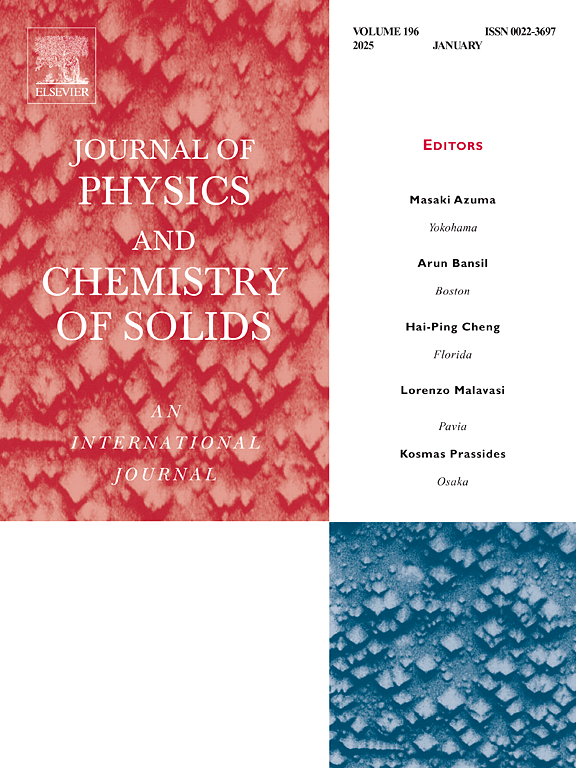NH3-SCR催化剂超低温活性和抗SO2性能的新型合成
IF 4.9
3区 材料科学
Q2 CHEMISTRY, MULTIDISCIPLINARY
引用次数: 0
摘要
低温NH3-SCR用超低温脱硝催化剂(150℃以下)是目前的研究热点。本研究以乳酸为还原剂,采用超声辅助高锰酸钾氧化还原沉淀法制备了高效的超低温脱硝氧化锰催化剂。通过控制碳酸钠的加入量以及碳酸钠和乳酸的不同加入顺序,催化剂表现出不同的性能。最佳的First-1.5催化剂比表面积高达210.00 m2/g,化学吸附氧(Oα)含量增加,氧化还原性能优异,在60-180℃的温度范围内实现了氮氧化物的完全转化。在200 ppm的高浓度二氧化硫气体存在下,催化剂在157 min内仍保持90%以上的转化率,表现出优异的耐硫性能。这是由于通过调节预加入碳酸钠溶液的量来调整反应体系到不同的碱性状态,从而导致反应速率的变化。反应速率的变化导致成核速率的不同,从而影响催化剂的结构、比表面积和化学吸附氧的量,从而调节催化剂的性能。本文章由计算机程序翻译,如有差异,请以英文原文为准。

Novel synthesis of MnOx catalyst with enhanced ultra-low-temperature activity and SO2 resistance for NH3-SCR
Ultra-low-temperature denitrification catalysts (below 150 °C) for low-temperature NH3-SCR are today's research hotspot. In this study, an efficient ultra-low temperature denitrification manganese oxide catalyst was prepared by ultrasonic-assisted potassium permanganate redox precipitation method using lactic acid as a reducing agent. By controlling the amount of sodium carbonate added to the solution and the different order of addition of sodium carbonate and lactic acid, the catalysts showed different properties. The best First-1.5 catalyst obtained an extremely 210.00 m2/g high specific surface area, an increased content of chemisorbed oxygen (Oα), and exhibited excellent redox performance, which achieved complete conversion of nitrogen oxides within the temperature range of 60–180 °C. In the presence of 200 ppm high concentration sulfur dioxide gas, the catalyst still maintained an outstanding conversion rate higher than 90 % for 157 min, demonstrating excellent sulfur resistance. This is attributed to the fact that adjusting the reaction system to different alkaline states by modulating the amount of pre-added sodium carbonate solution leads to a change in the reaction rate. The change in reaction rate leads to different nucleation rate, which affects the catalyst structure, specific surface area, and the amount of chemisorbed oxygen, thus modulating the performance of the catalyst.
求助全文
通过发布文献求助,成功后即可免费获取论文全文。
去求助
来源期刊
CiteScore
7.80
自引率
2.50%
发文量
605
审稿时长
40 days
期刊介绍:
The Journal of Physics and Chemistry of Solids is a well-established international medium for publication of archival research in condensed matter and materials sciences. Areas of interest broadly include experimental and theoretical research on electronic, magnetic, spectroscopic and structural properties as well as the statistical mechanics and thermodynamics of materials. The focus is on gaining physical and chemical insight into the properties and potential applications of condensed matter systems.
Within the broad scope of the journal, beyond regular contributions, the editors have identified submissions in the following areas of physics and chemistry of solids to be of special current interest to the journal:
Low-dimensional systems
Exotic states of quantum electron matter including topological phases
Energy conversion and storage
Interfaces, nanoparticles and catalysts.

 求助内容:
求助内容: 应助结果提醒方式:
应助结果提醒方式:


